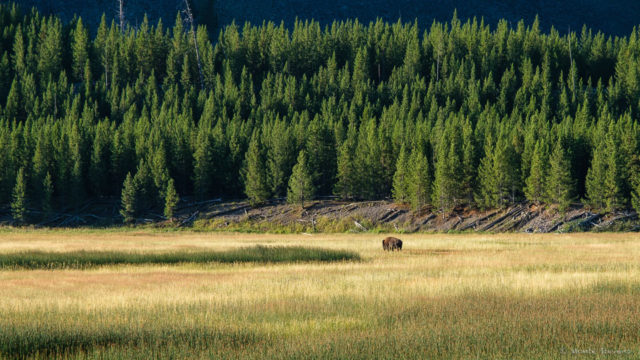American Bison once numbered in the millions, perhaps between 25 million and 60 million by some estimates, and they were possibly the most numerous large land animal on earth. However, by the late 1880s, they had been hunted to near extinction throughout North America. The Yellowstone Park bison herd was the last free-ranging bison herd in the United States being the only place where bison were not extirpated. The Yellowstone Park bison herd is descended from a remnant population of 23 individual bison that survived the mass slaughter of the 19th century in the Pelican Valley of Yellowstone Park. To assist in the species’ revival, in 1896 the United States government obtained one bull and seven cows from the Lincoln Park Zoo bison herd for Yellowstone. In 1902, a captive herd of 21 Goodnight plains bison was introduced to the park and then moved to the Lamar Valley and managed as livestock until the 1960s, when a policy of natural regulation was adopted by the park. Yellowstone National Park has large areas of alpine meadows and grass prairie and this provides a nearly optimum environment for American bison who live in river valleys, and on prairies and plains. Their typical habitat is open or semi-open grasslands, as well as sagebrush grasslands, semi-arid lands, and scrublands. Some lightly wooded areas are also known historically to have supported bison. Bison will also graze in hilly or mountainous areas where the slopes are not steep. It’s hard to imagine those numbers of bison especially when you look at the lone bison in the above image. (Information from Wikipedia.)

3 Comments
Faye
Initially, the feeling in the photo is ‘nature as it should be’. When you know the history of the bison’s near extinction, ‘melancholy’ becomes the feeling. Love it, though. 🙂
Monte Stevens
I just love this image of the lone bison as it speaks volumes to the harm we have done to all of creation. Melancholy is a fitting word.
Mark
It must have been quite a site back then. One thinks of the mass wildebeest migrations in Africa. I am glad they have a place where they are protected now.